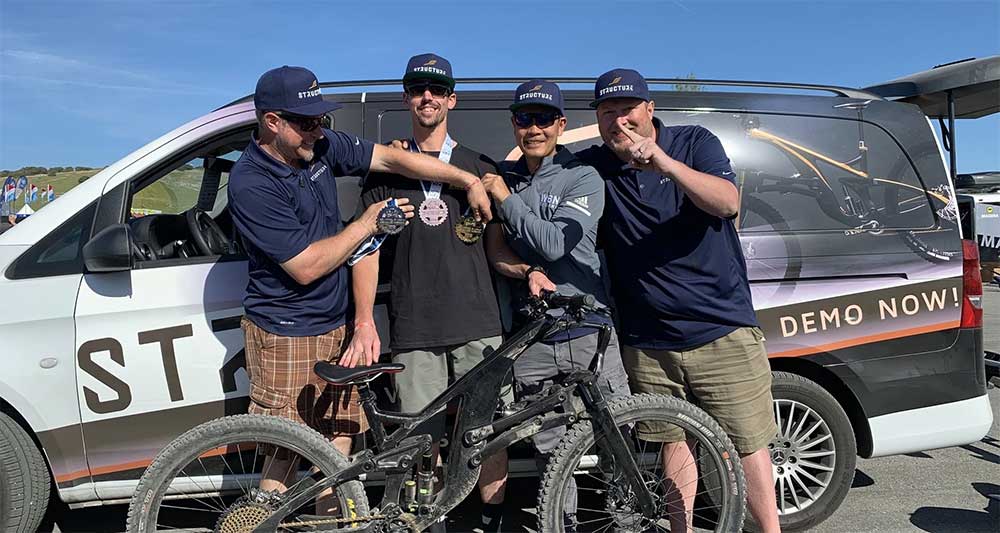Your Cart is Empty
April 01, 2022 4 min read

Originally posted Aug 30, 2019
It’s a big deal to see a machine that began as a pencil sketch become a physical reality, especially when the benefits of defying the current paradigm are not immediately apparent to many.
The idea of coupling modern design software with advanced carbon composites manufacture to address the limitations of telescoping fork performance was not without its detractors. “Telescoping forks do a great job these days. It’s incredible what people are doing on them and how fast bikes are becoming,” some argued. Others said, “You’re going up against huge players in the industry and well-established ideas of what a bike should be. This won’t be for the faint of heart.”
Those concerns were not unfounded. But every time I looked at the potential for linkage front suspension to offer improvements that would really benefit riders, there was clearly something there: An axle path that would do just about whatever I wanted. Reduction in brake dive. Similar leverage and motion ratios front and rear. Better retention of wheelbase throughout suspension travel.
Would it work, though? Would the end-result justify the cost and commitment involved in tooling for carbon fiber, which was the only material that seemed realistic for production? Would the bike ride as well on the most challenging trails as it had ridden a thousand times in my head?
In March of 2019, the Structure management team decided to find out. We visited our partner factory in Taichung, Taiwan to examine the first sample SCW1 frames out of the molds. We needed to see with our own eyes and ride the bike to know the truth, whatever it might be. I admit I was as nervous as an expectant father. Maybe there would be a fatal flaw in the design despite painstaking attention to every detail (we hoped) by a large team of engineers. Maybe there would be a frame component that required major redesign, or the bike would weigh 40 pounds or ride like a pig. Our previous alloy and rapid prototype bikes had indicated that everything planned for the production bike should hit the mark, but you never know until you put your own ass in the saddle and on the line.



